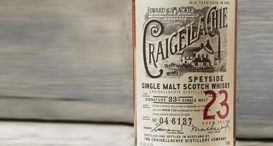A few thoughts on screw caps vs. cork closures on whisky bottles
let’s begin
In my role as brand and packaging consultant for some of the biggest and smallest spirits producers in the industry, I am often asked for my opinion on the closure and what it should be for the best experience possible for consumers. Yes, a lot of thought goes into this part of the whisky product.
Broadly there are two types of closures;
1. Cork stopper with metal / stone / plastic cap on the top which you hold on to and pull away from the bottle to open it
2. Screw caps which are mostly on blends and high end Japanese whiskies, and old school single malts
The purest in me always wants a cork closure as there is, for me, a satisfying feeling when you open a cork-sealed bottle due to both the motion and the sound of the cork leaving the glass. There is something really special and momentous about it.
The downside to cork closures, as explained to me by one Master Blender recently, and something I have experienced on more than one occasion, is that when you fancy a sneaky dram once your wife has gone to sleep, likely from your stash of ‘good stuff’ kept near the bed, you risk waking her up with that aforementioned satisfying sound of the cork being released from the confines of its malty surroundings.
Screw caps are a useful tool; used predominantly in blends, but also some single malts including entry level Glenfiddich products dating back to the early 1970’s, but they still lack the elegance, the romance and the premiumness worthy of the category.
One very important positive for screw caps, as pointed out to me by a different Master Blender last year when getting our geek on speaking about the nuances of packaging substrates (materials) and closures is that they very rarely fail.
Cork closures don’t often fail, it is very rare to have a corked whisky although it does happen and I’ve been on the receiving end of one of those tainted monstrosities. Corks also have a tendency of failing and disintegrating over the years if not stored correctly, as I experienced when opening a very old Port Ellen I had bought a long while ago, and also when opening an 80’s SMWS Glenlivet.
Curiously, some of the most sought after Japanese whiskies have screw caps for closures, including the Yamazaki 2017 Limited Edition which retailed at £250 when launched.
So, whilst the romantic – and the critic in me demands that there be a cork closure when I am buying whiskies, especially single malts, I see the benefit of screw caps – especially when I want that late night dram… BUT without cork stoppers how will I ever fill the barrel table in my office?!













4 thoughts on “A few thoughts on screw caps vs. cork closures on whisky bottles”
Corker of an article 😉
Ha ha – brilliant.
After having being left more than once with the head of a cork stopper in my hands and watching the broken cork being still in the bottle, I will have to pass on the undoubtedly elegant cork and its wonderful sound to favour the practical screw cap. I hope that some innovation in cork technology or materials will emerge to make it more reliable and durable; in the meantime, I would prefer screw caps.
Thank you for this article. Very informative and useful.